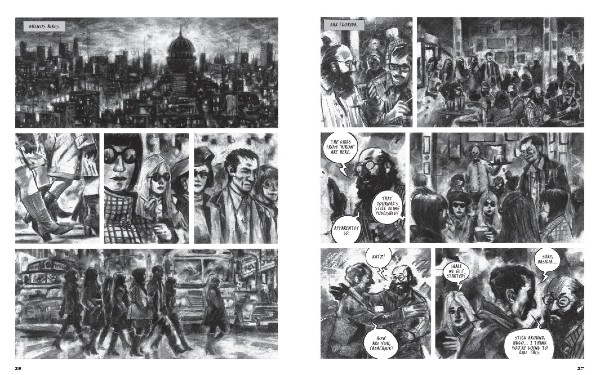 Beatnik Buenos Aires informs us early on that “at night we are all ashes. We seek a fire that gives up meaning.” Amongst the torrents of cigarette smoke inside dimly-lit cafes, there was a thriving intellectual community in Argentina’s capital city. A nocturnal group, parallel to the sunny daytime setting, who sought truth and beauty in the afterglow. Beatnik Buenos Aires is a tribute to this community in ‘60s Argentina, logging an erratic artistic movement that can easily be overshadowed by generalised Argentinian history of the American Beat Generation counterparts.
Beatnik Buenos Aires informs us early on that “at night we are all ashes. We seek a fire that gives up meaning.” Amongst the torrents of cigarette smoke inside dimly-lit cafes, there was a thriving intellectual community in Argentina’s capital city. A nocturnal group, parallel to the sunny daytime setting, who sought truth and beauty in the afterglow. Beatnik Buenos Aires is a tribute to this community in ‘60s Argentina, logging an erratic artistic movement that can easily be overshadowed by generalised Argentinian history of the American Beat Generation counterparts.
Beatnik Buenos Aires is not a detailed reconstruction, however, but rather pokes the embers of the movement’s memories, smudging it across its pages with Facundo Percio’s beautiful and evocative charcoal artwork. Diego Arandojo is uninterested in merely recounting the history but rather in evoking the abstract mood, resulting in a hagiography that is not holistic, but does enlighten and intrigue readers towards this time and place.
Instead of a straightforward plot, Beatnik Buenos Aires is like an anthology, its 13 chapters poetic stories of different artist. For instance, ‘The Massacre’ follows a man selling somewhat disturbing poems before sadistically throwing pipes through a window and maniacally leaping in front of a train. The appendix to Beatnik Buenos Aires informs us this was “Marcelo Fox,” an enigmatic and provocative author whose works were unsettling. The book isn’t trying to provide literal accounts or be dogmatically faithful, but rather convey the spirit of their writing, the intoxicating inspirational atmosphere of Buenos Aires. Similarly, the beautiful blonde “Goldie” pops up in several stories and is featured heavily in ‘Exact Copy’ where she reveals she works as an art forger. Again, Beatnik Buenos Aires’ backmatter notes tells readers ‘Exact Copy’ represents the practice of art forgery that existed in Argentina, while “Goldie” is a facsimile of a female artist. Beatnik Buenos Aires isn’t just dedicated to specific individuals, but the overall culture of the city itself.
Such an impressionistic approach is more interesting than a typical cultural anthropology would have been, although the lack of details might make readers lost in its twisted tales. The appendix notes provide context and explanation that orientate unfamiliar readers, even if these footnotes stand separate from the stories themselves. Additionally, despite the anthological approach, the chapters can blend into one another – the sparse narration giving enigmatic hints at similar themes running throughout. Percio’s gorgeous artwork doesn’t differentiate between them either, leaving Beatnik Buenos Aires strangely familiar. Reading through them all the culture can feel more monotonous than intended.
Arandojo also seems so reverential to this artistic scene that Beatnik Buenos Aires does not truly interrogate it. You are left with a sense of their aura, but little knowledge of the historical or political context for the work or what the group were truly trying to say. Nor does it disrupt the standard lionisation of male artists, featuring plenty of sex and a disturbing sequence of a photographer nearly drowning his girlfriend, without addressing these attitudes. Beatnik Buenos Aires needn’t condemn or tear down the movement, as that would be counterintuitive to its entire purpose. But conveying a deeper complexity and well-rounded understanding of these artists and their achievements might make Beatnik Buenos Aires land with more weight.
Yet perhaps Beatnik Buenos Aires is not aiming for a substantive document of the time, but setting a more ethereal mood. It’s a book trying to prompt and provoke a reaction to its often abstract tales, like a Buñuel film or the comics of Blutch. Beatnik Buenos Aires isn’t quite that surreal – the stories themselves are relatively grounded despite the narration – but this is the area its operating within. As a tribute to the night-time intellectuals and artists of ‘60s Buenos Aires, Beatnik Buenos Aires isn’t perfect, but it exhibits knowledge and sincerity towards the era with distinctive visuals. The precise details are secondary to the memories of smoke wafting off them.
Diego Arandojo (W), Facundo Percio (A) • Fantagraphics Books, $19.99
Review by Bruno Savill de Jong
















